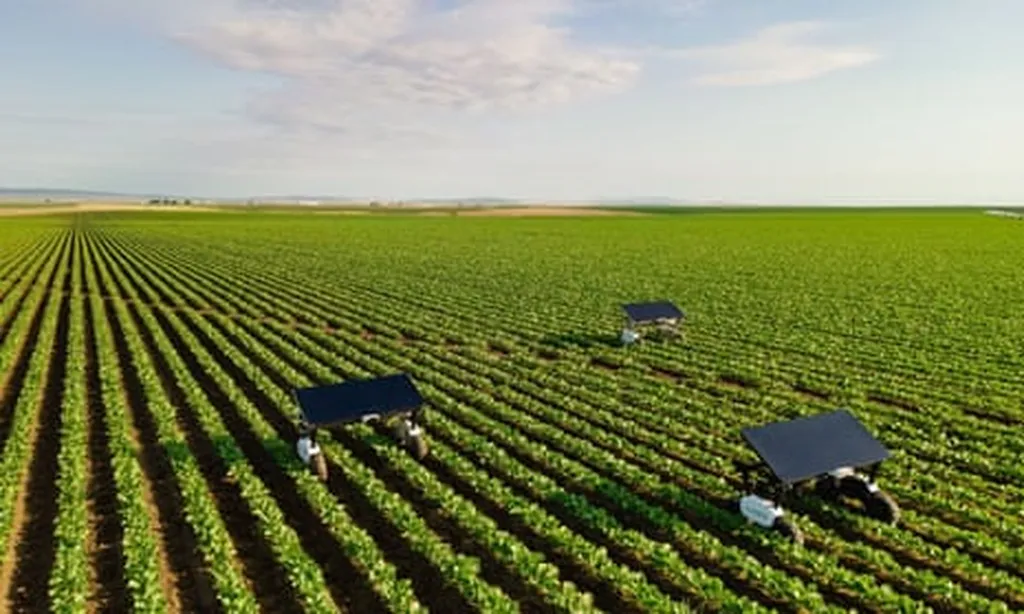In the evolving landscape of agriculture, the integration of technology is becoming increasingly vital, particularly in the realm of weed control. Field robots, once a futuristic concept, are now a reality, and their potential to revolutionize weed management is gaining traction. However, their role is not straightforward. Timo Sprangers, a crop and weed specialist at Wageningen University & Research (WUR), emphasizes that while field robots can significantly contribute to weed control, they are most effective when carefully integrated into a broader weed management strategy.
Integrated Weed Management (IWM) is the cornerstone of reliable weed control, according to Sprangers. This approach involves a comprehensive set of measures and decisions that consider both short-term and long-term impacts. The goal is to significantly reduce herbicide use over time, even in challenging conditions like sandy fields with heavy weed pressure. “People often say there’s enough weed seed in those soils for a hundred years, so only chemicals work. I argue that with a broad strategy, even there you can reduce chemical reliance over time,” Sprangers asserts.
The discussion around field robots in weed control is multifaceted. On one hand, robots can replace chemical control as herbicide resistance rises and fewer products become available. On the other hand, they can serve as an alternative to hand weeding in organic farming, where labour costs are escalating. The rapid development of robotic weed systems is driving adoption, but Sprangers takes a broader view. He sees various weed robots as just one component of a wider strategy, which is integrated weed management (IWM) — part of Integrated Crop Management (ICM).
According to Sprangers, weed control within ICM rests on five pillars. The first is crop diversity in time and space, which includes crop rotation, intercropping, and strip cropping. Each crop has specific weed problems and offers different options for weed suppression. The second pillar involves choosing varieties and cultivation methods that prioritize crop health and weed suppression. The third pillar is soil, water, and nutrient management, which affects weed competition. The fourth pillar includes targeted control methods, such as mechanical, chemical, thermal, and robotic interventions. The final pillar is monitoring and evaluation, which involves long-term weed strategy planning.
The role of the weed robot is multi-faceted. In organic farming, robots can replace costly manual labour and remove weeds to prevent future problems. In conventional systems, they can reduce dependency on herbicides while keeping chemical options available. The goal is to have a long-term strategy that keeps weed populations manageable, allowing for minimal effort in control.
Integrating weed robots, a relatively new technology, requires special attention. To use a robot with a gripper or laser most effectively, farmers should handle the rougher work more conventionally, such as close inter-row hoeing. This allows the robot to focus precisely on the crop row, maintaining speed and efficiency. The capacity for individual weed control largely depends on weed pressure, and starting early is crucial.
Sprangers highlights that even heavy weedy sands or peats can be cleaned up over time. “Soil is not an endless seed bank,” he says. “With 100% control, natural mortality clears them out.” This underscores the importance of removing even the last weed to slow seed bank build-up. As labour becomes a bigger issue, growers are becoming more aware of weed pressure and want to avoid extra seed production.
In conclusion, field robots offer a promising solution for weed control, particularly when integrated into a broader weed management strategy. Their role is not to replace existing methods entirely but to complement them, reducing reliance on herbicides and labour-intensive practices. As technology advances, the potential for robots in agriculture will continue to grow, offering new opportunities for sustainable and efficient farming practices.

